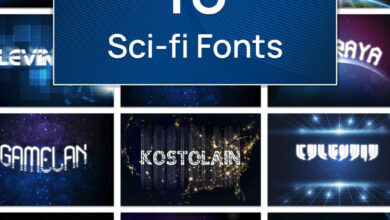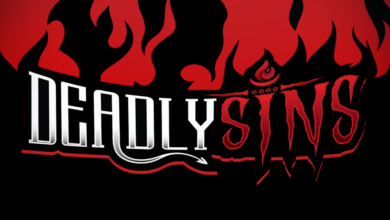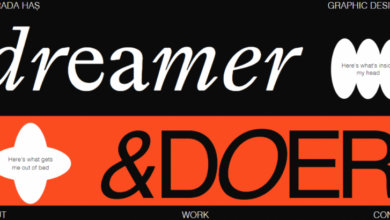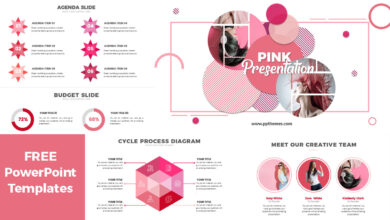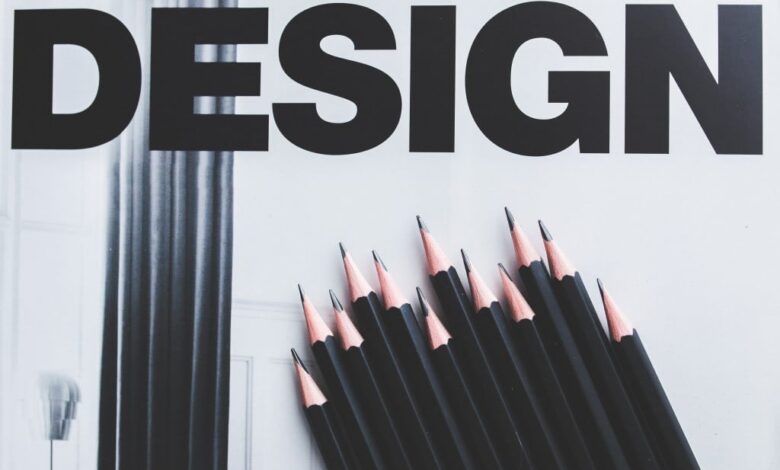
Graphic Design No Nos Avoid These Mistakes
Graphic design no nos: We all make them, even seasoned professionals! But understanding common design pitfalls is crucial for creating visually appealing and effective work. This post dives into the top mistakes graphic designers make, offering insights and solutions to elevate your designs. From typography blunders to color palette catastrophes, we’ll explore the most frequent offenders and how to avoid them.
Get ready to polish your design skills and create work that truly shines.
This guide acts as a checklist for your next project, helping you identify potential problems before they impact your design’s success. We’ll cover everything from choosing the right fonts and using high-resolution images to understanding the importance of brand guidelines and creating accessible designs. Think of this as your secret weapon for avoiding common design traps and consistently delivering impressive results.
Poor Typography Choices
Typography is often overlooked, but it’s a crucial element in effective graphic design. The right fonts enhance readability and contribute to the overall aesthetic, while poor choices can severely hinder a design’s impact, leading to confusion and a negative user experience. Choosing the wrong font can make even the most beautiful layout unusable.Poor typography choices, such as using illegible fonts or creating jarring inconsistencies in font pairings, significantly impact design effectiveness.
When a viewer struggles to read the text, they’re less likely to engage with the design’s message. Inconsistent font pairings can create visual chaos, undermining the intended aesthetic and professional impression. This ultimately reduces the design’s ability to communicate its intended purpose.
Examples of Difficult-to-Read Fonts
Certain fonts, due to their unique characteristics, are generally considered more challenging to read than others. These difficulties often stem from unusual letterforms, inconsistent kerning (spacing between letters), or extremely thin or thick strokes. For example, fonts with highly decorative elements, such as excessively ornate serifs or extremely stylized letterforms, can hinder readability, especially in body text. Similarly, script fonts, while elegant for headlines or short text snippets, can become incredibly difficult to decipher in large blocks of text.
Consider fonts like “Curlz MT” which is highly decorative and lacks clarity, or “Edwardian Script ITC” which, while beautiful for short titles, becomes unreadable in large paragraphs. The key is to always prioritize readability over purely aesthetic choices, especially when dealing with substantial amounts of text.
Comparison of Serif and Sans-Serif Fonts
| Font Type | Appropriate Uses | Misuses |
|---|---|---|
| Serif | Body text in books, newspapers, and magazines; formal documents; projects requiring a classic or traditional feel. Serifs improve readability in large blocks of text. | Headlines (unless very large); online interfaces (can appear cluttered on screen); modern or minimalist designs where a cleaner aesthetic is desired. |
| Sans-Serif | Headlines, signage, online interfaces, modern designs, and projects requiring a clean and contemporary feel. They are generally better suited for digital displays. | Large blocks of body text (can strain the eyes); formal documents requiring a traditional or classic feel; situations where high readability in long passages is paramount. |
Low-Resolution Images
Using low-resolution images is a common mistake in graphic design that can significantly detract from the overall professionalism and impact of a project. A blurry or pixelated image instantly cheapens the look of even the most carefully crafted design, undermining the message and leaving a negative impression on the viewer. High-quality visuals are crucial for creating a polished and engaging design, and understanding the difference between low and high-resolution images is key to achieving this.The detrimental effects of using pixelated or blurry images are numerous.
Firstly, they create a visually unappealing aesthetic. Imagine looking at a website or brochure where the product photos are so blurry you can barely make out the details. This lack of clarity makes the product appear less desirable and the brand less trustworthy. Secondly, low-resolution images can damage a brand’s credibility. Using unprofessional-looking images suggests a lack of attention to detail and can make the entire project seem amateurish.
Finally, poor image quality can negatively impact user experience. Squinting to decipher a blurry image is frustrating and can lead users to abandon a website or disregard a printed piece altogether.
High-Resolution Image Characteristics
A high-resolution image, in contrast, is sharp, crisp, and detailed. Imagine a photograph of a delicious-looking cake. In a high-resolution version, you can clearly see the individual crumbs, the glistening glaze, and even the subtle texture of the frosting. The colors are vibrant and true to life, and the overall impression is one of quality and professionalism.
The details are so clear that you can almost taste the cake. This level of detail is absent in a low-resolution image, where the cake would appear blurry, the colors muted, and the overall texture lost. The difference is night and day. A low-resolution image of the same cake would be a muddy mess of indistinct colors and shapes; the individual crumbs and texture would be completely lost, and the overall impression would be one of poor quality and lack of care.
The difference is immediately apparent, highlighting the importance of selecting appropriate image resolution.
Overuse of Stock Photos
Let’s face it, we’ve all seen them – those ubiquitous stock photos that scream “generic” and instantly deflate any attempt at creating a unique brand identity. Overusing stock photography can make your designs look impersonal, uninspired, and frankly, a bit lazy. It’s a common pitfall, but thankfully, one that’s easily avoided with a little creativity and a shift in perspective.The problem with relying heavily on stock photos isn’t just about their prevalence; it’s about the clichés they perpetuate.
These images, while readily available, often lack authenticity and fail to connect with the viewer on an emotional level. They can even actively detract from your message, creating a disconnect between your brand and your audience.
Common Clichéd Stock Photos and Their Alternatives
The overuse of certain stock photo tropes weakens the visual impact of your designs. For example, images of overly happy businesspeople shaking hands in suits, diverse teams brainstorming around a table filled with laptops, or a single person gazing thoughtfully out a window all contribute to a sense of visual monotony. These images lack the genuine emotion and specific context that make a design truly memorable.
Instead of relying on these tired tropes, consider commissioning original photography, using photos from your own archive (if appropriate), or exploring creative commons resources that offer more unique and authentic images. Think about the specific feeling or message you want to convey and seek out imagery that genuinely reflects that. For instance, instead of the generic “happy businesspeople” image, perhaps a candid shot of your actual team collaborating on a project would resonate far more powerfully.
Sourcing Unique and Engaging Images
Finding visually compelling alternatives to generic stock photos is easier than you might think. Instead of relying solely on large stock photo sites, explore these options:
First, consider commissioning a photographer. While it may seem like a larger investment, a professional photoshoot tailored to your brand’s specific needs will yield images that are far more effective and unique than anything you’ll find in a generic stock library. The result is high-quality imagery that accurately reflects your brand’s aesthetic and messaging.
Secondly, explore Creative Commons resources. Sites like Unsplash, Pexels, and Flickr offer a wealth of high-quality images under various Creative Commons licenses. While you need to carefully check the licensing terms, you can find many stunning photos that are free to use, provided you adhere to the license stipulations. This provides a middle ground between free, generic stock and commissioned professional photography.
Thirdly, use your own photography. If your brand involves products or a specific environment, capturing your own images offers unmatched authenticity. This approach can significantly enhance your brand’s storytelling, providing viewers with a genuine connection to your work and the people behind it. Imagine a bakery using photos of their own freshly baked bread, rather than a generic stock image of some anonymous loaves.
Authentic Photography vs. Generic Stock Photos: A Visual Comparison
The difference in visual impact is striking. Generic stock photos often feel detached and impersonal, lacking the emotional depth and context needed to truly engage a viewer. They are often overly posed and lack the spontaneity and realism of authentic photography. In contrast, authentic photography, whether professionally commissioned or sourced from your own archives, carries a weight and authenticity that instantly elevates the design.
It fosters trust and connection, allowing viewers to feel a more personal relationship with your brand. The difference is akin to comparing a perfectly staged, artificial scene to a candid, real-life moment – one feels genuine and relatable, the other feels contrived and distant.
Ignoring Brand Guidelines
Maintaining a consistent brand identity is crucial for any business, and graphic design plays a pivotal role in achieving this. Brand guidelines act as a roadmap, ensuring all visual communication aligns with the company’s values, personality, and overall message. Ignoring these guidelines can lead to a fragmented and diluted brand image, ultimately harming the business’s reputation and customer recognition.Ignoring established brand guidelines has significant repercussions.
Inconsistent use of logos, color palettes, typography, and imagery can create confusion among consumers, weakening brand recall and recognition. This inconsistency can also damage the perceived professionalism and credibility of the brand, leading to a loss of trust and potential customers. Furthermore, internal inconsistencies can cause difficulties in managing brand assets and maintaining a unified visual presence across all platforms.
Case Study: Successful Brand Guideline Adherence
Imagine a coffee shop chain, “Brewtiful Mornings,” launching a new loyalty program. Their brand guidelines specify a warm, inviting color palette centered around earthy browns, creamy beige, and deep reds, alongside a friendly, handwritten-style font for all marketing materials. The logo features a stylized coffee bean with a sunrise behind it.The design team, understanding the importance of brand consistency, meticulously adhered to these guidelines.
The loyalty program’s brochure and digital assets utilized the specified color palette, font, and logo. Images showcased happy customers enjoying coffee in a warm, inviting atmosphere, consistent with the brand’s overall aesthetic. The result was a cohesive and engaging campaign that resonated with existing customers and attracted new ones. The consistent visual language reinforced the brand’s identity, making the loyalty program feel like a natural extension of the Brewtiful Mornings experience.
The campaign was successful, leading to a significant increase in loyalty program sign-ups and repeat business. The visual consistency built trust and strengthened the connection between the brand and its customers, proving the value of following established brand guidelines.
Inconsistent Design Elements
Maintaining a consistent design aesthetic is crucial for creating a professional and memorable brand identity. Inconsistency, however, can severely undermine your efforts, leaving viewers feeling confused and potentially distrustful of your brand. A lack of cohesion in design elements creates a disjointed and unprofessional look, ultimately harming your brand’s credibility and effectiveness.Inconsistent design elements refer to the haphazard use of colors, fonts, spacing, and other visual components across different platforms and mediums.
This lack of uniformity disrupts the visual flow and makes it difficult for viewers to connect with your brand on a consistent level. Imagine a website with wildly varying font sizes and colors, alongside a social media profile using a completely different logo and color scheme. The disconnect is jarring and immediately undermines the professionalism of the brand.
Examples of Inconsistent Design Elements and Their Negative Effects
Let’s examine specific instances of design inconsistency and their impact. Consider a company using a vibrant teal for its logo and primary branding on its website, but then employing a muted gray for its email marketing campaigns. This inconsistency confuses the audience and weakens brand recognition. The lack of visual continuity makes it harder for viewers to instantly identify the brand across different touchpoints.
Another example could be using multiple fonts throughout a single website, each with drastically different weights and styles. This creates a chaotic visual experience and detracts from the overall message. Similarly, inconsistent spacing between text blocks, images, and other design elements can make the layout feel cluttered and unprofessional, hindering readability and overall visual appeal. Inconsistent use of imagery style—for instance, using highly stylized photography on one platform and amateur-looking snapshots on another—further dilutes the brand’s message and impacts the perceived quality.
Best Practices for Maintaining Design Consistency
Establishing and adhering to a comprehensive style guide is paramount for ensuring consistency. This guide should clearly define all aspects of your brand’s visual identity, including:
- Primary and Secondary Colors: Specify exact color codes (e.g., HEX, RGB) for consistent application across all platforms.
- Typography: Define the primary and secondary fonts, their weights (bold, regular, light), sizes, and usage guidelines for headings, body text, and captions.
- Spacing and Padding: Establish consistent margins, padding, and spacing between elements to maintain visual harmony and readability.
- Imagery Style: Determine the overall style of photography or illustrations, including color palettes, composition, and editing techniques.
- Logo Usage: Clearly Artikel how the logo should be used, including minimum size requirements, clear space, and acceptable variations.
Beyond the style guide, employing design software with features like style libraries and master pages can streamline the process of maintaining consistency. Utilizing a centralized design system allows for efficient updates and ensures all design elements remain aligned with the brand’s visual identity. Regularly reviewing and updating the style guide to adapt to evolving brand needs is also crucial to ensure long-term consistency.
Finally, consistent collaboration between designers and other stakeholders is essential to avoid deviations from the established guidelines. This ensures that everyone involved understands and adheres to the established brand identity.
Poor Color Palette Choices
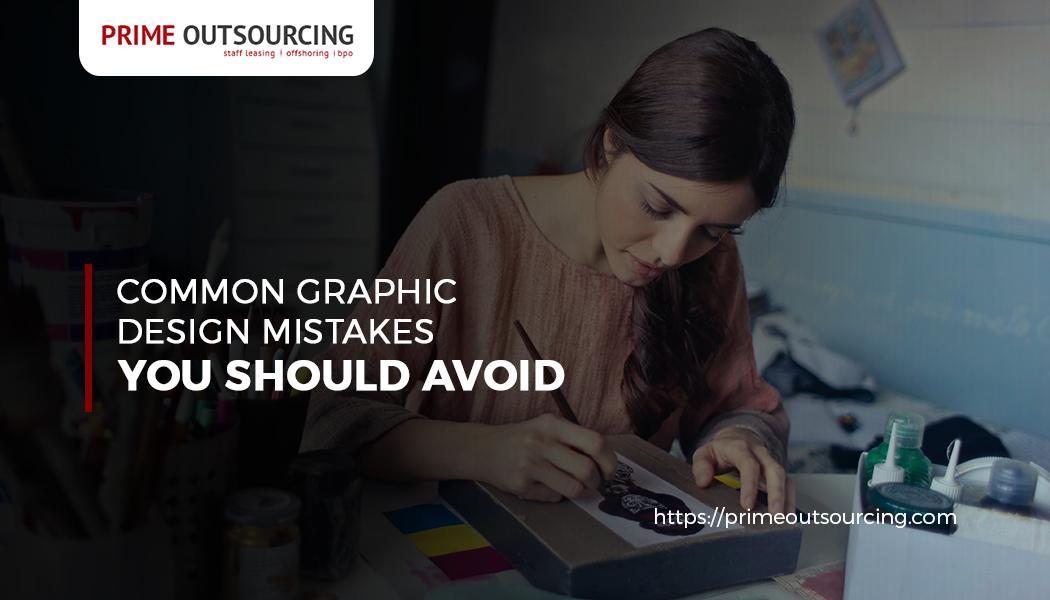
Source: primeoutsourcing.com
Choosing the right color palette is crucial for any design project. A poorly chosen palette can significantly detract from a design’s effectiveness, making it visually unappealing and even difficult to read. The colors you select directly impact the mood, message, and overall impact of your work.Inappropriate color combinations can severely hinder a design’s readability and visual appeal. For example, using colors that are too close in value (lightness and darkness) can create a muddy, indistinct look, making text hard to decipher and elements difficult to distinguish.
Similarly, placing colors with high contrast next to each other without careful consideration can create visual jarring and fatigue, leading to a negative user experience. The overall aesthetic suffers when colors clash or lack harmony, resulting in a design that feels unprofessional and amateurish.
Examples of Ineffective Color Palettes
Certain color combinations are consistently problematic. For instance, a palette consisting solely of highly saturated, analogous colors (colors next to each other on the color wheel, such as various shades of green) can feel monotonous and lack visual interest. The result is a flat, uninspiring design. Another common mistake is using a palette that includes too many colors without a clear hierarchical relationship.
This creates visual chaos, making it difficult for the viewer’s eye to find a focal point. Imagine a website with bright red, neon green, electric blue, and hot pink all competing for attention; the result is likely to be overwhelming and confusing. Finally, palettes that ignore accessibility guidelines, such as insufficient contrast between text and background colors, make the design unusable for people with visual impairments.
Applying Color Theory for Harmonious Palettes, Graphic design no nos
Understanding basic color theory is essential for creating visually pleasing and effective color palettes. The color wheel is a fundamental tool. Using complementary colors (colors opposite each other on the color wheel, like blue and orange) can create high contrast and visual excitement, but this requires careful balance to avoid a jarring effect. Analogous color schemes, while potentially monotonous if not carefully managed, can create a sense of calm and coherence.
Triadic color schemes (using three colors evenly spaced on the color wheel, such as red, yellow, and blue) offer a good balance of contrast and harmony. Split-complementary color schemes (using a base color and the two colors adjacent to its complement) provide a similar balance but with slightly less intensity than a true complementary scheme. By thoughtfully applying these principles, and considering the specific context and desired mood of the design, designers can craft palettes that are both visually appealing and effective in communicating their intended message.
For example, a website for a calming spa might use a palette of soft blues and greens, while a website for a fast-food restaurant might use brighter, more energetic colors like red and yellow.
Cluttered Designs
Clutter in graphic design is the enemy of effective communication. A design overloaded with elements creates visual noise, distracting the viewer and preventing them from focusing on the key message. This ultimately undermines the purpose of the design, whether it’s to inform, persuade, or entertain. Understanding what contributes to clutter and how to combat it is crucial for creating successful designs.A cluttered design overwhelms the viewer with too much visual information.
Common culprits include excessive text, numerous images, conflicting fonts, and a chaotic arrangement of elements. These elements compete for attention, resulting in a confusing and unappealing final product. The result is a design that fails to resonate with the audience and leaves a negative impression. The key is to prioritize and streamline, focusing on what truly matters.
Identifying Clutter Contributors
Several design elements frequently contribute to a cluttered aesthetic. Overuse of decorative elements, such as excessive borders, drop shadows, or textures, can quickly create visual chaos. Similarly, a multitude of different fonts and font sizes disrupts visual harmony and readability. Using too many colors, especially without a cohesive color palette, also contributes to the overall feeling of disorganization and confusion.
Finally, a poorly organized layout, with elements haphazardly placed on the page, can significantly increase the feeling of visual noise.
Methods for Design Simplification
Simplifying a design involves a careful process of editing and refinement. The first step is to identify the core message or purpose of the design. Then, ruthlessly eliminate anything that doesn’t directly support that message. This might involve removing unnecessary images, shortening text blocks, or simplifying complex layouts. Consider using white space strategically; it’s not empty space, but rather an active design element that helps to organize and breathe life into the design.Prioritize visual hierarchy.
Guide the viewer’s eye through the design using size, color, and placement to emphasize important elements. A consistent visual language, using a limited color palette and a maximum of two or three fonts, contributes to a sense of unity and clarity. Think critically about each element: does it add value or detract from the overall design? If it’s not essential, it should be removed.
Visual Comparison: Cluttered vs. Minimalist Design
Imagine two versions of a website promoting a coffee shop. The cluttered version features a busy background image, multiple overlapping text blocks in various fonts and sizes, a plethora of coffee bean images scattered across the page, and several different colors clashing together. The overall impression is overwhelming and chaotic; the viewer struggles to find the information they need.In contrast, the minimalist version features a clean, white background with a single, high-quality image of a steaming cup of coffee.
The text is concise and clearly organized using a single, easy-to-read font. A limited color palette of browns, creams, and a single accent color creates a calming and sophisticated atmosphere. The viewer immediately understands the coffee shop’s brand and can easily find the information they need. The difference is stark: one design is confusing and overwhelming, while the other is clear, inviting, and effective.
Ignoring White Space: Graphic Design No Nos
White space, often overlooked, is a crucial element in graphic design. It’s the empty space surrounding design elements – text, images, and other visual components. Effective use of white space isn’t about emptiness; it’s about creating visual breathing room, enhancing readability, and guiding the viewer’s eye through the design. Ignoring it leads to cluttered, confusing, and ultimately, ineffective designs.Proper use of white space significantly improves readability and visual hierarchy.
By strategically placing empty space around text blocks, for instance, you create a more comfortable reading experience. The eye is less strained, and the information is easier to digest. Similarly, white space helps establish visual hierarchy. Larger blocks of white space draw attention to key elements, creating a clear visual path for the viewer. This deliberate use of negative space directs the eye to the most important information first, enhancing the overall effectiveness of the design.
Negative Space Impacts on Design
Inadequate use of white space has several negative consequences. A design overcrowded with elements feels chaotic and overwhelming. This visual clutter makes it difficult for viewers to find what they’re looking for and can lead to frustration and disengagement. Furthermore, the lack of breathing room can negatively impact the perception of professionalism and credibility. A poorly spaced design can appear amateurish and lack the polish of a well-crafted piece.
This can be particularly damaging for businesses relying on visual communication to project a specific brand image. For example, a website with cramped text and overlapping images would likely deter users and damage the company’s perceived credibility.
White Space Usage and Effects
The following table illustrates how different uses of white space can impact design.
| Type of White Space | Placement | Effect | Example |
|---|---|---|---|
| Margins | Around the edges of the page or design element | Provides breathing room, improves readability, and creates a clean, professional look. | A website with ample margins around its content, creating a sense of spaciousness. |
| Gutter | Between columns of text or images | Separates elements, improves readability, and enhances visual organization. | A magazine layout with clearly defined gutters between columns of text, making the content easy to scan. |
| Padding | Inside a container or element | Creates space between the content and the container’s border, improving visual clarity. | A button with sufficient padding around the text, making it easy to click without accidentally hitting adjacent elements. |
| Spacing between elements | Between individual design elements (e.g., images, text blocks) | Controls visual hierarchy, guides the viewer’s eye, and prevents elements from feeling cramped. | A product page with sufficient spacing between product images and descriptions, highlighting each element effectively. |
Lack of Visual Hierarchy
A well-designed piece of graphic work guides the viewer’s eye effortlessly. This isn’t accidental; it’s the result of carefully constructed visual hierarchy. Without it, your design becomes a chaotic jumble, leaving the viewer confused and overwhelmed, unable to understand the intended message or follow a logical flow of information. A strong visual hierarchy ensures that important elements stand out, while less crucial elements recede into the background, creating a clear path for the viewer’s gaze.Visual hierarchy is about directing attention.
Imagine a website landing page crammed with text, images, and buttons, all vying for attention in the same size, color, and font. The viewer is bombarded with stimuli, unable to discern what’s important. Contrast this with a page where the headline is significantly larger and bolder than the body text, a key call-to-action button is a contrasting color, and supporting images are strategically placed to enhance the message.
The second example demonstrates a clear visual hierarchy, leading the user smoothly through the content.
Techniques for Establishing Visual Hierarchy
Creating a strong visual hierarchy involves a combination of techniques, working together to guide the viewer’s eye. The most effective approaches use size, color, and placement strategically.Size is perhaps the most obvious technique. Larger elements naturally draw more attention than smaller ones. A large headline immediately communicates importance, while smaller subheadings and body text provide supporting information. Consider a poster advertising a concert.
The band’s name would be the largest element, followed by the date, venue, and ticket information in progressively smaller sizes.Color plays a vital role in guiding attention. Bright, contrasting colors immediately catch the eye, while muted tones recede into the background. For example, a website might use a vibrant red for its call-to-action button, making it stand out against a more neutral background.
A poorly designed website might use multiple clashing bright colors, leading to a confusing and jarring experience. The strategic use of color creates visual separation and helps establish priority.Placement is another crucial element. Elements placed higher on the page or closer to the center tend to receive more attention. This is why important information is often placed above the fold on a website.
Avoiding clashing fonts and cluttered layouts are key graphic design no-nos, but equally important is understanding how your visuals perform online. To boost your YouTube presence, check out this awesome guide on getting it on with YouTube to learn how to create thumbnails that pop. Back to design, remember – less is often more, especially when it comes to avoiding those pesky graphic design pitfalls.
Imagine a magazine cover: the main image and headline are typically centrally positioned, commanding the viewer’s attention.
Examples of Poor and Improved Visual Hierarchy
Consider a poorly designed flyer for a local business. The business name is the same size as the address and contact information, all rendered in the same font and color. The result is a muddled mess, with no clear focal point. To improve this, the business name should be significantly larger and bolder, perhaps in a contrasting color.
The address and contact information can be smaller and less prominent, placed in a clearly defined section.Another example is a website with a cluttered navigation bar. All menu items are equally sized and styled, making it difficult for users to find what they need. A better approach would be to highlight the most important menu items with larger font sizes or contrasting colors, creating a clear visual hierarchy within the navigation itself.
Sub-menus can be smaller and less prominent, guiding the user through the site’s information architecture more effectively.
Inaccessible Design
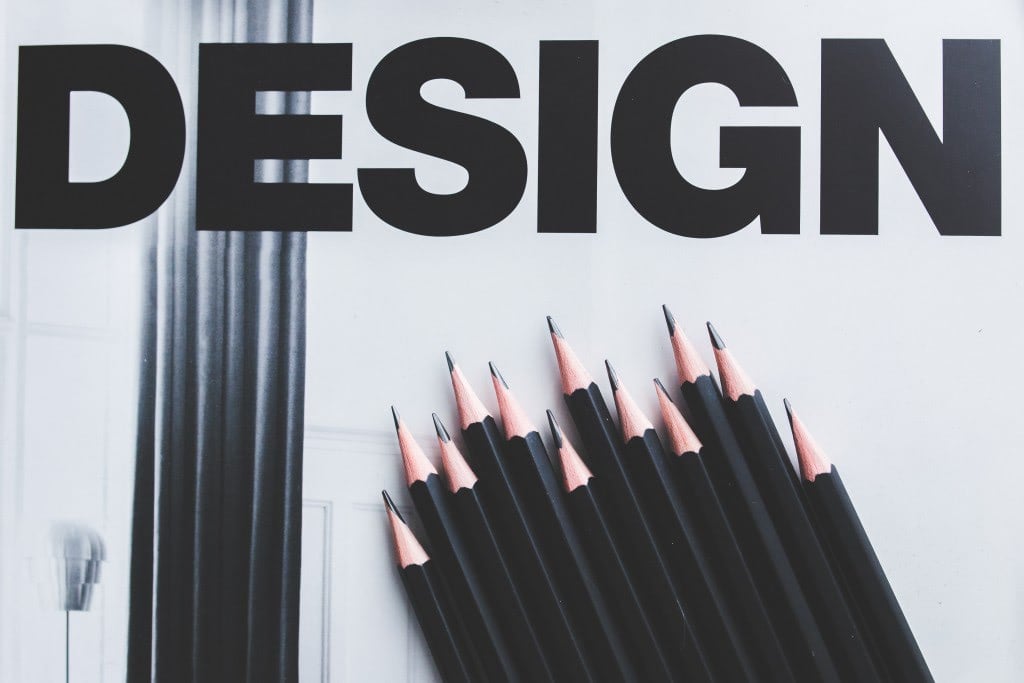
Source: artisantalent.com
Creating inclusive and accessible designs isn’t just a matter of following guidelines; it’s about ensuring everyone can use and enjoy your work. Ignoring accessibility means excluding a significant portion of the population, limiting their access to information and services. This is not only ethically wrong but also bad for business, potentially costing you customers and harming your brand reputation.
Designing for accessibility is about creating a more equitable and user-friendly experience for all.Accessibility in graphic design focuses on making designs usable by people with disabilities. This includes people with visual, auditory, motor, cognitive, and neurological impairments. By considering the needs of these users, we can create designs that are more inclusive and welcoming to everyone. Failure to do so results in designs that are unusable, frustrating, and ultimately, discriminatory.
Examples of Accessibility Barriers and Alternative Approaches
Several design elements can inadvertently create significant accessibility barriers. Let’s explore some common culprits and their accessible alternatives.
- Low Color Contrast: Insufficient contrast between text and background makes it difficult for people with low vision to read. A simple solution is to use a sufficient color contrast ratio, adhering to WCAG (Web Content Accessibility Guidelines) recommendations, which specify minimum contrast ratios for different text sizes. For instance, instead of using light gray text on a white background, consider using dark text on a light background.
A color contrast checker tool can help ensure compliance.
- Complex Navigation: Intricate or illogical navigation structures can be confusing for users with cognitive impairments. A clear and intuitive navigation structure, using consistent and descriptive labels, will greatly improve accessibility. Think of a simple, linear menu structure instead of a maze-like one. Providing clear visual cues to aid navigation also helps.
- Lack of Alternative Text for Images: Images without alternative text (alt text) are inaccessible to screen reader users. Alt text provides a textual description of the image, allowing screen readers to convey the image’s content to visually impaired users. For example, instead of an image of a smiling person, include alt text like “Smiling customer enjoying our product”.
- Missing Keyboard Navigation: Relying solely on mouse interactions excludes users with motor impairments. Ensuring all interactive elements are accessible via keyboard navigation is crucial. This means that users should be able to navigate and interact with all elements using only the Tab key and other keyboard shortcuts.
- Poorly Designed Forms: Forms that lack clear labels, instructions, and error messages can be particularly challenging for users with cognitive disabilities. Clear and concise labels, proper form field ordering, and immediate feedback on user input are essential for accessible form design.
Best Practices for Accessible Design
Creating accessible designs requires a proactive and thoughtful approach. Here are some key best practices to guide your design process:
- Follow WCAG Guidelines: The Web Content Accessibility Guidelines (WCAG) provide a comprehensive set of recommendations for creating accessible web content. While not strictly limited to web design, the principles are widely applicable to graphic design projects. Familiarize yourself with these guidelines and strive to meet their success criteria.
- Use Accessible Color Palettes: Choose color combinations that provide sufficient contrast and avoid using color alone to convey information. For example, don’t use red text to indicate an error if a user might have color blindness; instead, combine color with a clear visual cue like an exclamation mark.
- Provide Alternative Text for All Non-Text Content: Ensure that all images, videos, and other non-text elements have descriptive alt text. This allows screen reader users to understand the content of these elements.
- Test with Assistive Technologies: Test your designs with screen readers, keyboard navigation, and other assistive technologies to identify any accessibility issues. This is crucial to ensure that your designs work as intended for all users.
- Involve Users with Disabilities in the Design Process: The most effective way to create accessible designs is to involve users with disabilities in the design process from the beginning. Their feedback and insights are invaluable in identifying and addressing potential accessibility barriers.
Final Wrap-Up
Mastering graphic design is a journey, not a destination. By understanding and avoiding these common pitfalls, you’ll significantly improve the quality and impact of your designs. Remember, attention to detail, a strong understanding of design principles, and a willingness to learn are key to creating stunning visuals that resonate with your audience. So, ditch the design don’ts, embrace the design dos, and watch your creative projects soar!
Frequently Asked Questions
What’s the difference between serif and sans-serif fonts?
Serif fonts have small decorative strokes at the ends of letters (like Times New Roman), often considered more traditional and readable for large blocks of text. Sans-serif fonts lack these strokes (like Arial), appearing cleaner and more modern, often better for headlines and shorter text.
How can I find high-resolution images without breaking the bank?
Explore free stock photo sites like Unsplash and Pexels, or consider investing in a subscription to a stock photo service for access to a wider range of high-quality images. Alternatively, taking your own photos is a great way to ensure uniqueness and high resolution.
What are some examples of inaccessible design elements?
Poor color contrast (making text hard to read), lack of alt text for images (making them inaccessible to screen readers), and complex navigation are all examples of inaccessible design. Always consider users with disabilities when designing.
